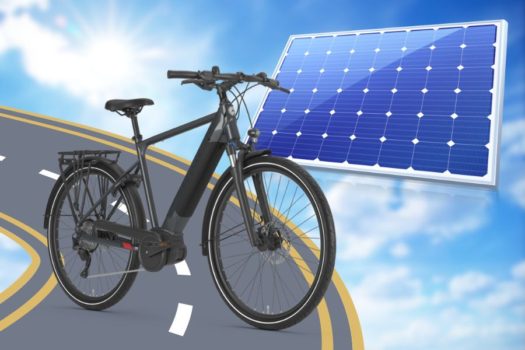All products are selected by our High Voltage Rides editors. If you buy something through our links as an Amazon Associate we earn from qualifying purchases.
Electric bikes (eBikes) have proven to be a highly effective and eco-friendly alternative to traditional motorized vehicles, aiding in mitigating our carbon footprint. However, we still rely largely on fossil fuel-based electricity to charge them. But what if we could power these eBikes using the abundant and renewable energy provided by the sun? Today, we will delve into the feasibility of charging your electric bike with a solar panel.
Charging Electric Bikes: The Basics
Before discussing the integration of solar power, it’s crucial to understand the energy needs of an eBike. The power capacity of eBike batteries typically ranges between 200Wh to 700Wh. A Wh (watt-hour) is a measure of energy, equivalent to one watt of power expended for one hour. Depending on the usage and model of your eBike, a full charge can cover between 20 to 60 miles. Usually, to charge an eBike battery from a standard electric outlet, it would take about 3-6 hours.
Solar Panels: Harnessing Sun Power
Solar panels capture energy from the sun and convert it into electricity using photovoltaic cells. A typical solar panel for home use has a power output of around 200 to 350 watts per hour under optimal conditions. This means, in full sun, a 300W solar panel can generate 300Wh of energy in one hour. However, this is under perfect conditions – the actual output can be affected by factors such as the angle of the panel, weather conditions, and the time of year.
Can You Charge an eBike with a Solar Panel?
Given the above information, it’s clear that it’s entirely feasible to charge an eBike using a solar panel. However, a single standard solar panel might not be enough for a fast charge, especially when we consider less-than-optimal conditions. For example, if we have a 300W panel and a 500Wh eBike battery, under perfect conditions, it would take a bit under two hours to charge. But, considering real-world conditions where a panel might be operating at around 75% efficiency, it could take closer to 3 hours.
To overcome these limitations, there are two main approaches. Firstly, you can increase the number of solar panels. Having more panels means more solar energy can be harnessed, reducing the charging time. Secondly, you can use a battery storage system. By storing excess solar energy, you can charge your eBike even when the sun isn’t shining.
Practical Considerations
While technically possible, charging an eBike with a solar panel has a few practical considerations:
Portability: Solar panels can be bulky, and if you plan to charge on the go, you’ll need to consider portable solar panels which are generally less efficient.
Cost: Solar panels, especially high-capacity ones, can be expensive upfront, although they do pay for themselves in the long run.
Location: You’ll need to have a sunny spot to place your panels. And remember, they should be oriented towards the sun for maximum efficiency.
Storage: Consider investing in a solar energy storage system to ensure you can charge your eBike even when the sun isn’t available.
The Future is Sunny
In conclusion, it’s entirely feasible to charge an eBike with a solar panel, although it does require careful consideration and planning. Harnessing solar energy for eBikes is a shining example of how we can take further strides in our efforts to curb climate change. As solar technology advances and becomes more affordable, it’s expected that this mode of charging will become increasingly mainstream. The future of eBike charging is not just electric; it’s solar-electric!


